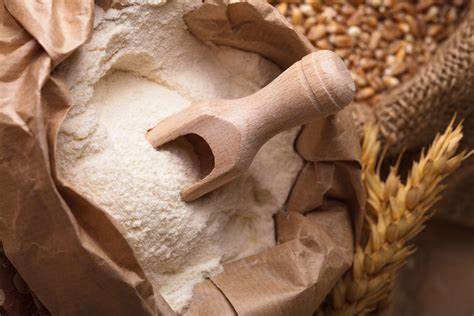Knowing ‘How to Select Flour’ is key to baking bread at home. It is a tradition that spans across cultures and centuries. The aroma of freshly baked bread is comforting, and the taste is incomparable. When it comes to baking white bread at home, the quality of the flour you use is crucial. This guide will provide insights into the best flours to use based on their nutrient content and milling methods.
Understanding the Basics: Flour Types
White bread is traditionally made using either all-purpose flour or bread flour. All-purpose flour is a versatile option with a moderate protein content, usually around 10-12%. This balance between structure and tenderness makes it suitable for a range of baking recipes, including a decent loaf of white bread.
On the other hand, bread flour boasts a higher protein content, usually around 12-14%. The extra protein aids in the development of gluten, providing bread with its characteristic chewy texture and helping it rise. When baking bread specifically, many home bakers opt for bread flour to enhance the texture of their loaves.
Quality Matters: How to Select Flour
Several flour brands have earned the trust of home bakers through their commitment to quality. Brands like King Arthur Flour and Bob’s Red Mill offer a variety of high-quality flours, including all-purpose, bread, and specialty flours, with both conventional and organic options. Central Milling is renowned for their premium organic flours, while brands like Giusto’s and Einkorn.com provide a range of specialty flours, including high-protein bread flours and ancient grain flours.
Beyond the Ordinary: Specialty Flours
While bread flour and all-purpose flour are the traditional choices for white bread, other types of specialty flour can offer unique flavors, textures, and nutritional benefits. Stone-ground flour, for instance, is milled by grinding grain between stones, which retains more of the wheat’s nutrients and provides a coarser texture that some bakers prefer. Sprouted flour is made from grains that have been allowed to sprout before grinding, a process that can make the nutrients more bioavailable and the grains easier to digest.
The Organic Advantage
If your concern extends to pesticides, organic flour is a good choice. Made from wheat grown without synthetic pesticides or fertilizers, organic flour brands like Bob’s Red Mill and Central Milling can offer additional peace of mind.
Conclusion
While baking homemade bread, the choice of flour significantly influences the end product. The best flour for you depends on your personal preferences and baking goals. Whether you choose all-purpose, bread flour, or a specialty variety, remember that the quality of the flour matters. While this guide focused on white bread, it’s worth noting that whole grain and whole wheat flours offer even more nutritional benefits, a topic that deserves its own discussion. Our choice and go to flour is King Arthur.
For more information about baking bread at home and choosing the right flour, consider exploring these resources:
https://www.ice.edu/blog/choosing-best-flour-bread-baking-comprehensive-guide

